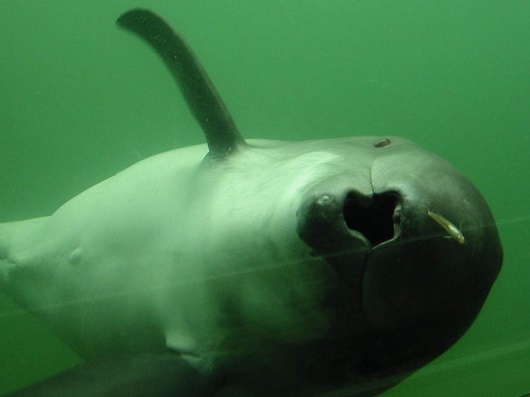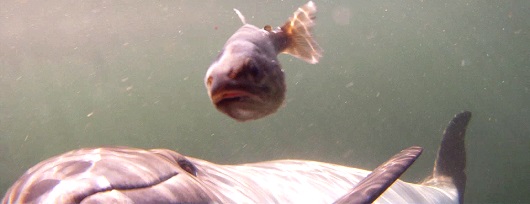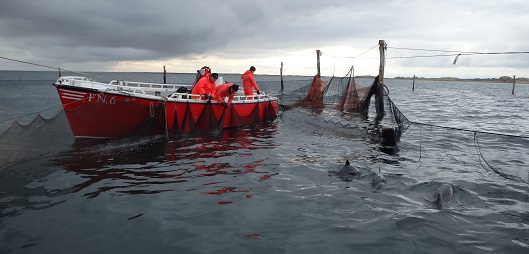Porpoises discovered to be extreme hunters

Harbour porpoises live on an energetic knife-edge of constant eating and hunting, in order to survive, a new study involving researchers at the University of St Andrews has revealed.
The findings, published in the journal Current Biology, suggest that the constant need to hunt makes these mammals vulnerable to increased human activity in the oceans.
The international study used miniature computer tags attached with suction caps to record the movements and echolocation sounds made by porpoises as they hunt, as well as the echoes coming back from prey.
By analysing the echoes, the team of researchers in Denmark, Scotland and Germany were able to measure how often porpoises tried to catch fish, as well as the size of the fish, and whether the fish escaped. The study shows that porpoises hunt small fish (under 5cm long) continuously day and night capturing as many as 3000 per day.
A success rate of more than 90 per cent means that porpoises are amongst the most successful known hunters.
Scientists have puzzled over how these small (1.5m/50kg) echolocating predators can eat enough to survive in cold waters. Earlier tagging studies suggested that porpoises ate infrequently but this didn’t match up with the small fish found in the stomachs of stranded animals.

The lead author of the study, Danuta Wisniewska, a postdoctoral investigator at Aarhus University in Denmark, said: “Studying how animals hunt in the wild is important in ecology but is also really challenging – it is difficult to capture what both predator and prey are doing at the same time. This is the first time we have been able to measure simultaneously how a marine mammal hunts and how often it is successful.”
Dr Mark Johnson, a researcher in the School of Biology at the University of St Andrews, developed the tags used in the study. He said: “The trick here was to tap into the echolocation sounds that porpoises use to sense their environment. Porpoises make hundreds of clicks a second as they approach prey and the echoes coming back give us incredible detail about what the prey are doing.”
The study, involving the South Denmark University and the University of Hannover, was funded by the German Federal Agency for Nature Conservation to understand how increasing development of the seas around northern Europe may be impacting on porpoises.

Harbour porpoises share these seas with dense ship traffic, fisheries, oil production and a growing array of wind and tide turbines. Although the tiny fish targeted by porpoises are not of interest in commercial fisheries, porpoises are frequently by-caught in fishing gear and this is a major threat to some populations.
However, recent studies have also shown that porpoises may be affected by noise from boats, underwater construction and oil exploration.
Peter Madsen, a professor of zoophysiology at Aarhus University in Denmark and the senior author on the study, said: “Relying on such small prey makes porpoises especially vulnerable to disturbance. They are like shrews that can’t stop hunting for long without it having dire consequences.”
Notes to news editors
Picture credits
News page: Monika Dyndo
This page bottom: Jonas Teilmann
Issued by the University of St Andrews Communications Office, contactable on 01334 462530 or [email protected].
Category Research